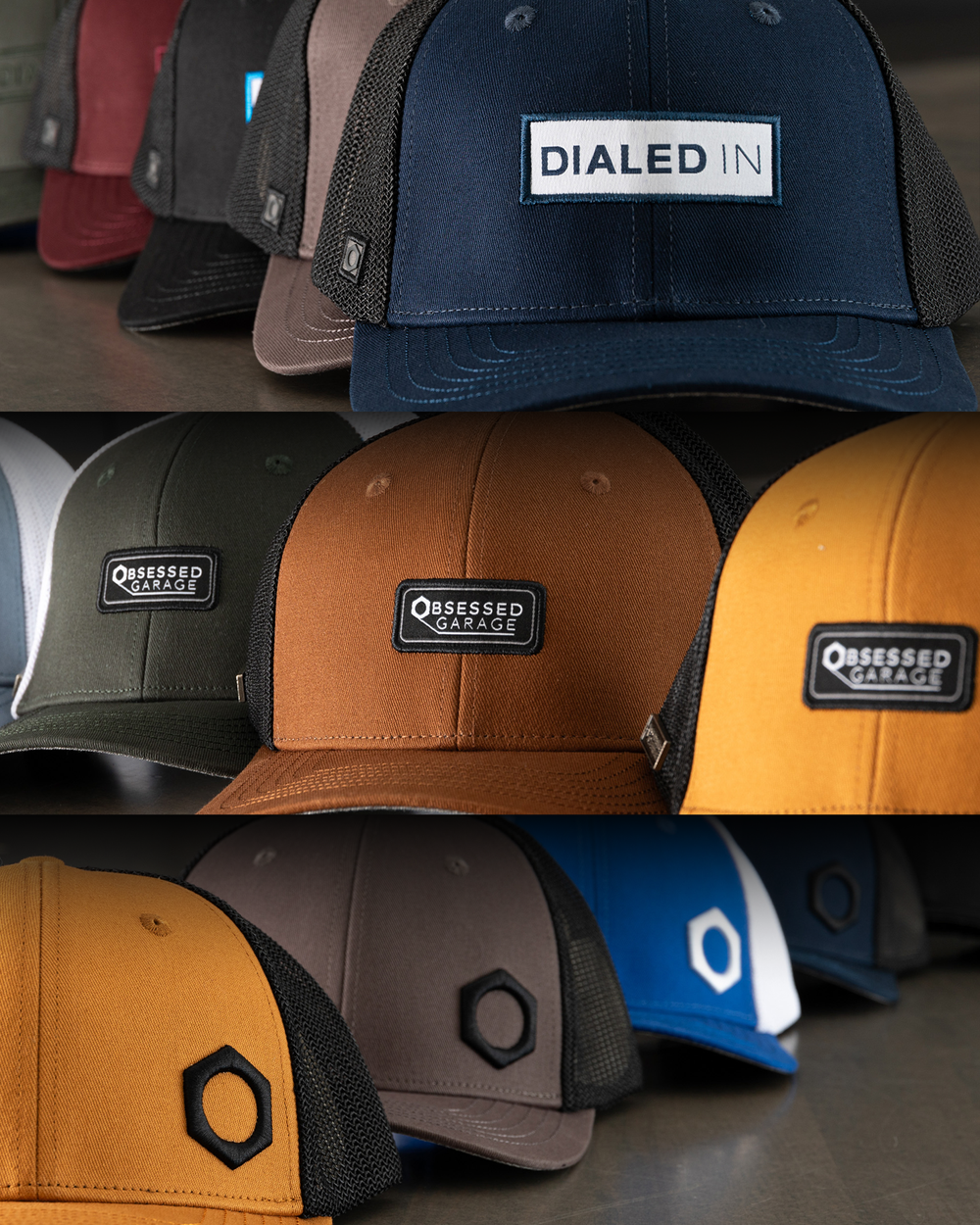QuickJack Measuring Guide
QuickJack Versatility
QuickJack lifts come in multiple lengths and weight ratings to accommodate everything from sports cars to SUVs. This guide walks you through exactly how to measure your vehicle so you can choose the perfect fit.
4 Measurements Needed
To ensure safe and proper lift placement, you’ll need just four key vehicle measurements: curb weight, tire spread, lift point spread, and ground clearance.
Verify & Purchase
Once you’ve got your measurements, use our QuickJack sizing chart to match your vehicle with the correct model. Order with confidence knowing your setup is dialed in.
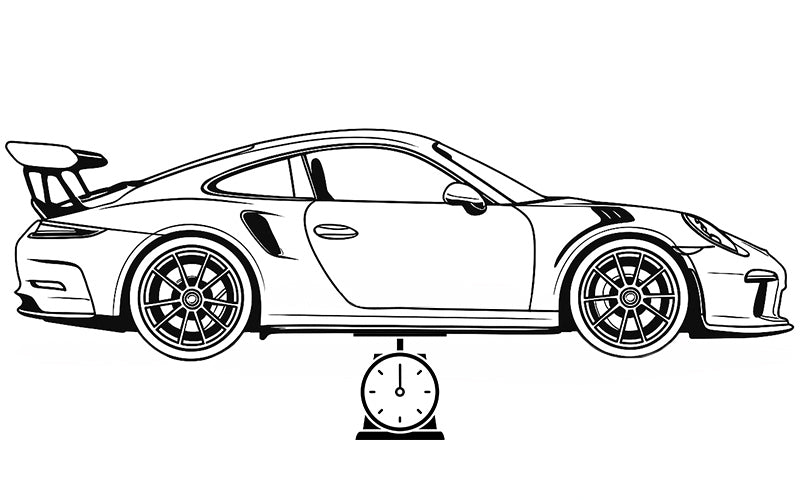
1. Locate Vehicle Curb Weight
You can find your vehicle’s curb weight either on the driver’s side door, in the manual or on the internet.
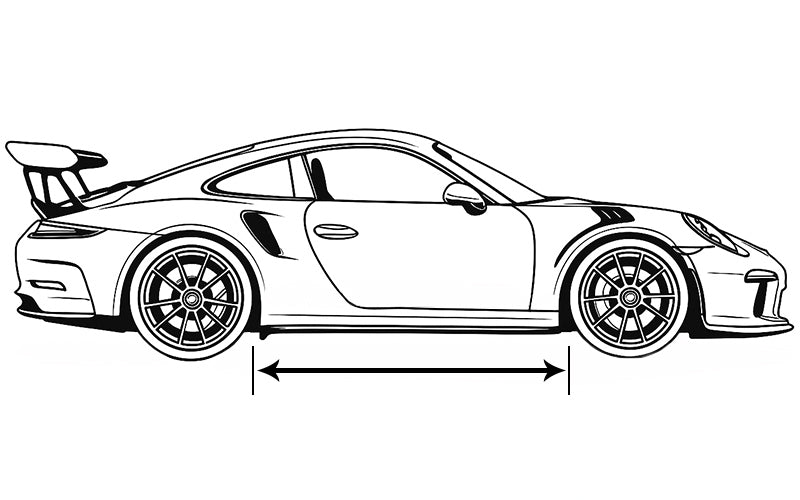
2. Measure the Tire Spread
Step 1 — Measure the distance between your front and rear tire treads, keeping the measuring tape 3" above the ground. factor in excessive suspension droop if necessary.
Step 2 — Subtract 2” from the measurement in Step 1.
The result is your Tire Spread Measurement (Measurement B)
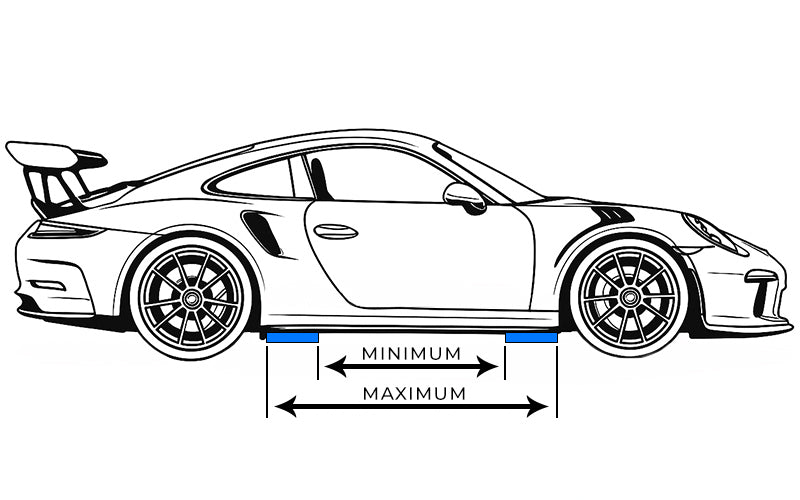
3. Lift Point Spread (Min/Max)
Step 1 — Measure the inside of your jacking point to the inside of the opposite jack point. This is your Minimum Lifting Point Spread.
Step 2 — Measure the outside of your jacking point to the outside of the opposite jack point. This is your Maximum Lifting Point Spread.
These two measurements will become your Lifting Point Spread (Measurement C)
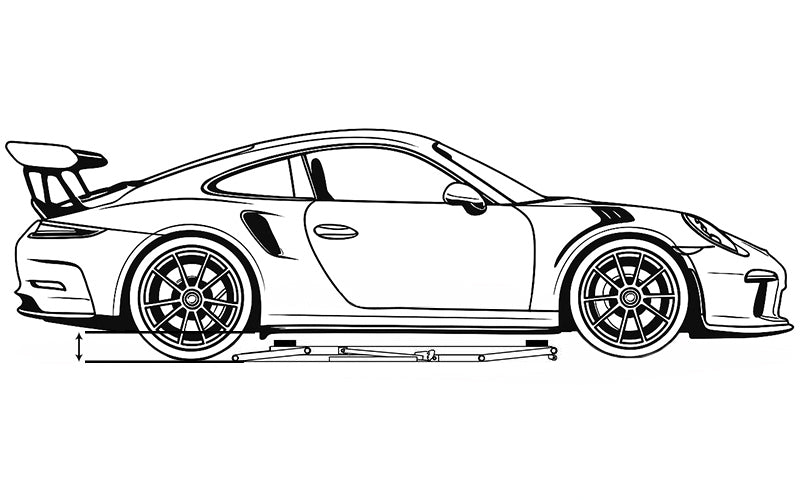
4. Ground Clearance
Measure the distance between the ground and a lifting point.
This is your Ground Clearance measurement (Measurement D)
Keep in mind that there must be some space between QuickJack and your vehicle’s lifting points. If your car's lift points are resting flush on a fully-lowered QuickJack, the frames will be unable to generate enough force to lift the vehicle.
Determining the Right Model
Now that you have all the measurements to determine which QuickJack car lift model will work with your vehicle(s), match your measurements with the chart below:
| A - Curb Weight | B - Tire Spread | C - Lifting Point Spread | D - Ground Clearance | Manufacturer Recommendation |
|---|---|---|---|---|
| ≤ 3,500-lbs. | ≥ 62.5" | 27" (min) – 50.5" (max) | ≥ 3.5" | 3500SLX |
| ≤ 6,000-lbs. | ≥ 70" | 37" (min) – 60" (max) | ≥ 3.5" | 6000TL |
| ≤ 6,000-lbs. | ≥ 76" | 43" (min) – 66" (max) | ≥ 3.5" | 6000TLX |
| ≤ 8,000-lbs. | ≥ 70.75" | 37" (min) – 60" (max) | ≥ 4" | 8000TL |
| ≤ 8,000-lbs. | ≥ 76" | 43" (min) – 66" (max) | ≥ 4" | 8000TLX |
| ≤ 6,000-lbs. | ≥ 86.5" | 53" (min) – 76" (max) | ≥ 4" | 6000ELX |
≤ less than or equal to, ≥ greater than or equal to
Obsessed Garage's Recommendations
-

QuickJack 8000TLX
Our top pick for maximum versatility. The 8000TLX handles most trucks and SUVs with ease, yet still slides under performance cars like the E92 M3, GT4RS and Ford Ranger Raptor. This is the go-to QuickJack if you’re working on a variety of vehicles, whether it’s your weekend track car or your daily F-150 Raptor.
-

QuickJack 6000ELX
If your vehicle has far-apart jack points, this is the one. The 6000ELX is made for long sedans like the Tesla Model S, BMW G80 M3, M340Xi and 540i. That extended length of the 6000ELX bridges the distance without needing sketchy extensions or positioning tricks. It’s the proper tool for vehicles with longer jacking points.
-

QuickJack 3500SLX
Perfect for compact cars and smaller machines. The 3500SLX is lightweight, quick to set up, and ideal for vehicles like Miatas, smaller Fiats, classic roadsters or even side-by-sides and UTVs. If garage space is tight and your fleet is small, this is all you need. We don't recommend this unless you have those very specific requirements.
